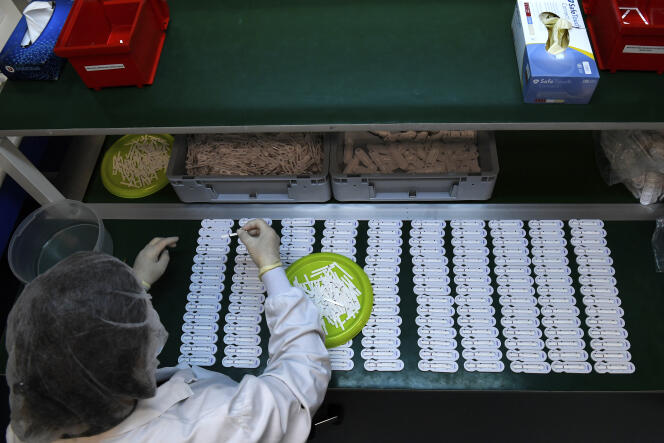The World Health Organization (WHO) designates it as a “silent pandemic” and one of the world’s leading public health threats. Every year, antibiotic resistance, the resistance of bacteria to antimicrobials, compromises the ability of medicine to treat infections, leading to therapeutic failures, delays in care, and 1.3 million deaths worldwide – 35,000 in Europe , 5,500 in France.
While this phenomenon requires concerted action between human medicine and veterinary medicine, the latest French health surveillance data show a contrasting situation: in humans, a resumption of antibiotic consumption was observed in 2022, according to Public Health France (SPF), when the exposure of animals to antibiotics has fallen sharply, notes the National Health Security Agency (ANSES) in its report published Friday November 17.
In terms of human consumption, France remains one of Europe’s poor performers, ranking fifth among the most consuming countries per capita, behind Romania, Cyprus, Bulgaria and Greece. It was thus 31% above the average for European countries. “What strikes me are the successive failures of the latest national plans on antibiotics, for almost twenty years”deplores Professor Robert Cohen, president of the National Professional Council of Pediatrics.
Certainly, the first Antibiotics plan, covering the period 2001-2005, had succeeded in reducing the consumption of antibiotics by 19% in France. But since then, the use of these therapeutic weapons has not decreased sufficiently. From around 1,000 prescriptions per 1,000 inhabitants in 2012, antibiotic consumption increased to 821 prescriptions in 2022 (excluding hospitalizations), according to SPF. This last year was notably marked by an increase in sales of 16.6% compared to 2021.
“The prescription system remains very permissive”
It is in community medicine that nearly 90% of antibiotics are prescribed, and where the resumption of their consumption has been confirmed. SPF specifies that “the levels observed, however, remain slightly lower than those of 2019”, before the Covid-19 pandemic. During this health crisis, the use of these medications had fallen considerably: confinements and barrier measures had slowed the spread of infectious germs of all types.
In 2022, prescriptions for children aged 0 to 4 – the age group for which they are highest – have even exceeded 2019 levels. During the pandemic, confinements and barrier measures, by limiting infections , weakened children’s natural immune defenses. “But as soon as these measures were lifted, infections and prescriptions started to rise even more as these children were less well immunized”, explains Robert Cohen. In fact, in 2022, there was “an explosion of pediatric infections, particularly in winter, reaching levels rarely reached”. If bronchiolitis, like other viral diseases, does not require antibiotics (except in the case of bacterial superinfections, for some of them), strep throat, scarlet fever, impetigo and other bacterial infections have greatly increased the use of these treatments.
You have 55% of this article left to read. The rest is reserved for subscribers.
